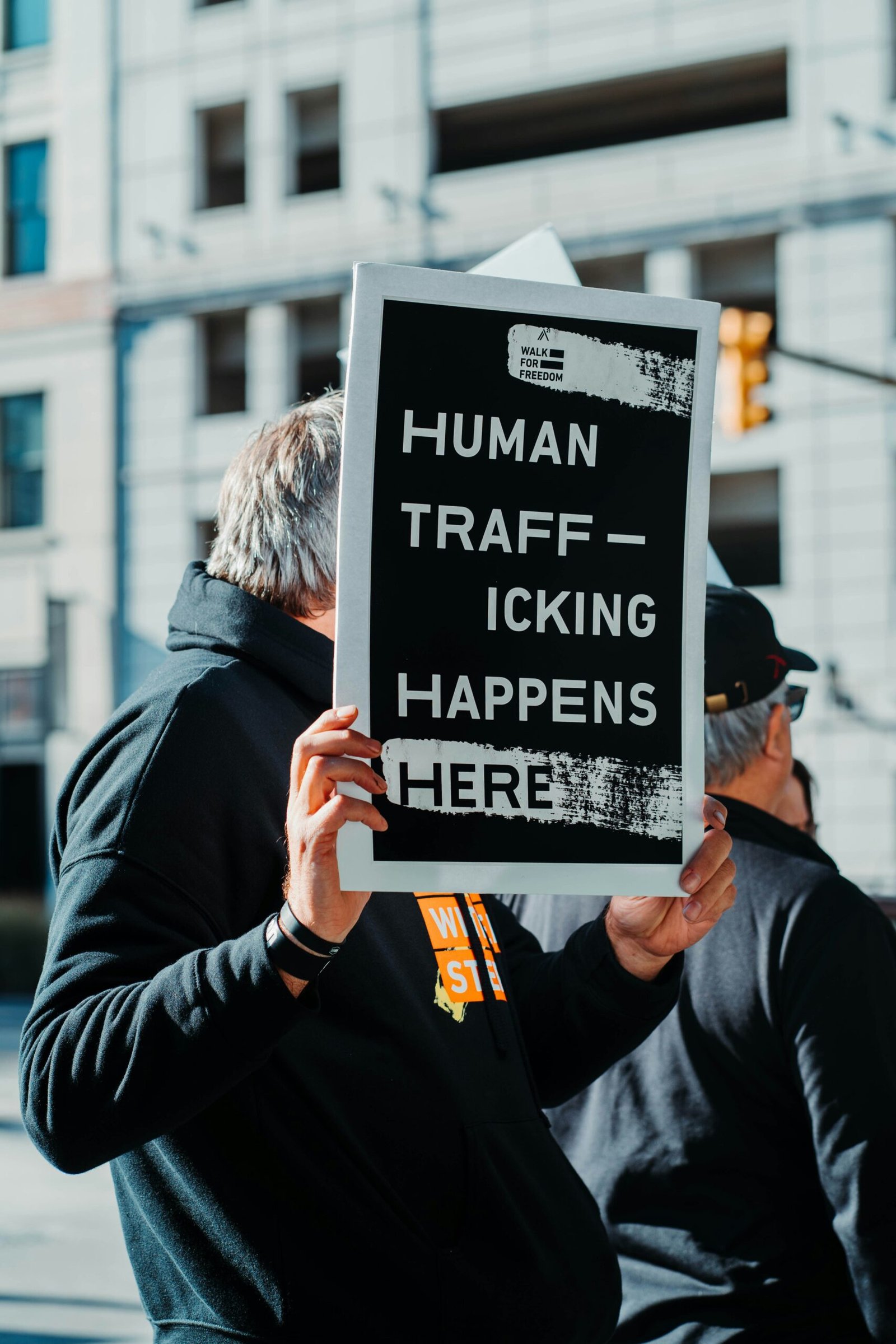Trafficking for Scams: The Dark Underbelly of Social Media Fraud in Southeast Asia

Photo by Hermes Rivera on Unsplash
Introduction: Unveiling a Disturbing Trend
In recent years, a disconcerting trend has emerged within the realm of human trafficking, one that leverages the digital landscape to perpetuate its crimes. A growing number of individuals are being trafficked to Southeast Asia to be exploited in sophisticated cyber fraud schemes. This nefarious activity not only ensnares unsuspecting victims in a web of deceit but also has far-reaching implications for millions of social media users worldwide.
Human trafficking has long been associated with forced labor, sexual exploitation, and domestic servitude. However, the advent of the internet and the proliferation of social media have provided traffickers with new avenues to exploit vulnerable individuals. In this alarming new model, trafficked persons are coerced into participating in fraudulent activities online, ranging from phishing scams to elaborate social media fraud operations. The victims, often lured by false promises of legitimate employment, find themselves trapped in foreign lands, stripped of their freedom and compelled to engage in criminal enterprises.
The impact of this form of trafficking is profound and multifaceted. For the victims, the psychological and physical toll is immense, as they are subjected to constant pressure and threats from their captors. Moreover, the societal and economic repercussions extend beyond the immediate victims. The proliferation of cyber fraud undermines trust in digital platforms, erodes user confidence, and imposes significant financial losses on individuals and businesses alike.
As we delve into the specifics of how these schemes operate and the mechanisms employed by traffickers, it is crucial to recognize the broader context and implications. The intersection of human trafficking and cyber fraud represents a disturbing convergence of criminal activities that demands urgent attention and a concerted response from governments, law enforcement agencies, and social media platforms. Understanding the scale and complexity of this issue is the first step towards formulating effective strategies to combat and ultimately eradicate this pernicious form of exploitation.
The Mechanics of Social Media Scams
Social media scams have become increasingly sophisticated, leveraging the vast reach and interconnected nature of platforms such as Facebook, Instagram, and Twitter. These scams typically begin with the creation of fake profiles or hijacking of legitimate accounts to establish credibility. Scammers then employ a variety of tactics to lure victims, ranging from phishing schemes and fraudulent giveaways to investment fraud and impersonation scams.
Phishing remains one of the most common techniques, where scammers send deceptive messages or emails that appear to be from reputable sources. These communications often contain links to counterfeit websites designed to steal personal information or login credentials. Another prevalent method involves fraudulent giveaways or contests, where victims are prompted to share personal information or make small payments to claim non-existent prizes.
Investment fraud on social media has also seen a surge, particularly with the rise of cryptocurrency. Scammers create enticing advertisements and posts promising high returns on investment. They may even use fake testimonials and endorsements from celebrities or influencers to gain the trust of potential victims. Once the victim transfers funds, the scammer disappears, leaving the victim with significant financial loss.
Impersonation scams involve fraudsters posing as friends, family members, or even public figures to solicit money or personal information. These scams often exploit the trust and familiarity inherent in social media networks. Additionally, scammers frequently use bots and automated scripts to amplify their reach and efficiency, making it challenging for platform moderators to detect and eliminate these fraudulent activities.
To evade detection, scammers continuously adapt their methods, employing advanced techniques such as masking their IP addresses, using temporary email accounts, and frequently changing their usernames and profile pictures. They may also engage in social engineering, manipulating victims into divulging sensitive information by exploiting emotional triggers like fear, urgency, or greed.
Overall, the mechanics of social media scams are intricate and ever-evolving. Understanding these methods is crucial for both users and authorities to develop effective strategies for prevention and intervention.
Trafficking for Cyber Fraud: A New Dimension
The phenomenon of trafficking individuals for the sole purpose of executing scams represents a disturbing new dimension in cyber fraud. This illicit activity has gained significant traction in recent years, particularly in Southeast Asia, where organized crime syndicates exploit vulnerable populations. According to recent statistics, thousands of individuals have fallen victim to trafficking for cyber fraud. These victims are often lured with promises of legitimate employment opportunities, only to find themselves coerced into participation in sophisticated online scams upon arrival.
Typically, the profile of trafficked individuals encompasses those from economically disadvantaged backgrounds, with limited access to education and employment. Young adults and adolescents are particularly susceptible, as they are often more easily manipulated and less aware of the potential dangers. Reports indicate that regions such as Cambodia, Myanmar, and the Philippines are among the most affected by this alarming trend. Victims are often transported across borders, complicating efforts to track and rescue them.
Organized crime plays a central role in orchestrating these schemes. Syndicates operate with a high degree of sophistication, employing advanced technology and intricate networks to evade law enforcement. These organizations not only traffic individuals but also provide the infrastructure necessary to perpetrate large-scale cyber fraud. This includes setting up fake call centers, phishing operations, and other fraudulent activities designed to deceive unsuspecting victims worldwide.
The impact of trafficking for cyber fraud extends beyond individual victims, affecting families, communities, and entire regions. It perpetuates a cycle of poverty and exploitation, undermining efforts to promote economic development and social stability. As such, addressing this issue requires a concerted effort from governments, international organizations, and civil society to enhance awareness, strengthen legal frameworks, and provide support to victims.
Case Studies: Stories from the Ground
In recent years, Southeast Asia has emerged as a hotspot for social media fraud, with traffickers exploiting vulnerable individuals to perpetrate scams. These victims often find themselves ensnared in a web of deceit, forced into digital crimes under threat and coercion. To illuminate the gravity of this issue, we delve into specific case studies that shed light on the harrowing experiences of those trafficked for scams.
One poignant story involves Mai, a young woman from Vietnam. Promised a lucrative job in Malaysia, Mai was instead forced to operate fraudulent social media accounts aimed at deceiving users into parting with personal information and money. Stripped of her passport and confined to a small apartment, Mai was subjected to physical abuse and constant surveillance. Her ordeal only ended when she managed to escape and contact local authorities, but the psychological scars remain.
Similarly, in the Philippines, 23-year-old Carlos was lured by a job offer that promised a stable income to support his family. Upon arrival, he was coerced into creating fake social media profiles to run romance scams. Carlos was threatened with violence if he refused to comply. After months of captivity, he managed to send a covert message to his family, who then sought help from the authorities. The subsequent raid led to his rescue but highlighted the sophisticated networks behind such operations.
Another case from Thailand involves a group of teenagers who were trafficked to Cambodia under the guise of working in a call center. Instead, they were forced to engage in cryptocurrency scams, targeting international victims through social media platforms. The traffickers used intimidation tactics to maintain control, making escape seem impossible. It was only after a coordinated effort by NGOs and law enforcement agencies that these teenagers were freed, bringing to light the complex cross-border nature of these scams.
These stories are just a few among countless others, illustrating the severe human toll of trafficking for social media scams. Victims not only endure physical and emotional abuse but also face immense challenges in seeking justice and rebuilding their lives. These case studies underscore the urgent need for comprehensive measures to combat trafficking and support survivors in their journey to recovery.
The Role of Social Media Platforms
Social media platforms play a pivotal role in the modern digital landscape, connecting billions of users worldwide. However, this interconnectedness also renders them susceptible to exploitation by malicious actors, particularly in the realm of social media fraud and scams. The responsibility of these platforms in addressing such issues is a subject of significant debate and scrutiny.
Currently, social media companies employ a range of measures to detect and prevent scams. These measures include advanced algorithms and artificial intelligence systems designed to identify suspicious activities and fraudulent accounts. Additionally, user-reporting mechanisms are in place, allowing individuals to flag content or profiles that appear deceitful. Despite these efforts, the sheer volume of data and the sophisticated tactics utilized by scammers often result in many fraudulent activities slipping through the cracks.
Several criticisms have been directed at social media platforms for their perceived inadequacies in combating social media fraud. Critics argue that the existing measures are reactive rather than proactive, often addressing the problem only after significant damage has been done. There are also concerns about the transparency of these platforms in disclosing the extent of the issue and the effectiveness of their countermeasures. The call for more stringent actions includes demands for enhanced verification processes, increased transparency in reporting fraudulent activities, and more robust user education initiatives.
Moreover, the role of social media platforms in preventing exploitation extends beyond technological solutions. It encompasses a broader responsibility to foster a safer online environment. This includes partnerships with law enforcement agencies, non-governmental organizations, and other stakeholders to create a multi-faceted approach to tackling social media fraud. By working collaboratively, these entities can share intelligence, resources, and best practices to enhance the overall efficacy of their efforts.
In conclusion, while social media platforms have implemented various measures to address scams and fraud, there is a pressing need for more comprehensive and proactive strategies. Enhanced verification processes, greater transparency, and collaborative efforts with external stakeholders are crucial steps toward safeguarding users and mitigating the risks associated with social media fraud in Southeast Asia.
Efforts by Law Enforcement and NGOs
Law enforcement agencies and non-governmental organizations (NGOs) have been at the forefront of combating trafficking for scams in Southeast Asia. These entities employ a multifaceted approach, combining direct intervention, preventive measures, and rehabilitative support to address this pervasive issue. Specific operations, such as coordinated raids and undercover investigations, have been instrumental in dismantling trafficking networks and cyber fraud rings. For instance, the Interpol-coordinated Operation In Our Sites has led to the arrest of numerous individuals involved in online fraud, while national police forces have conducted targeted operations to rescue victims and apprehend perpetrators.
Collaborations between law enforcement and NGOs are crucial in these efforts. NGOs often provide critical intelligence and support services that complement police activities. Organizations like the International Justice Mission (IJM) and ECPAT International work hand-in-hand with local authorities to identify trafficking victims, offer legal assistance, and ensure the provision of aftercare services. These partnerships extend to capacity-building initiatives, where NGOs train law enforcement personnel on best practices for handling trafficking cases and identifying online fraud schemes.
Despite these efforts, significant challenges remain. One major obstacle is the transnational nature of these crimes, which requires cross-border cooperation and coordination. Jurisdictional limitations and varied legal frameworks across Southeast Asian countries often hinder swift action. Additionally, the anonymity provided by the internet complicates the identification and prosecution of offenders. Victims, many of whom are isolated and fearful of retribution, are often reluctant to come forward, further complicating rescue and rehabilitation efforts.
Nonetheless, the persistent and collaborative endeavors of law enforcement and NGOs continue to yield positive outcomes. Through sustained efforts, these organizations aim to disrupt trafficking networks, protect vulnerable individuals, and ultimately reduce the incidence of social media fraud in the region.
Preventive Measures and Awareness
Protecting oneself from the pervasive threat of social media scams requires a proactive and multifaceted approach. Individuals must prioritize their online security by employing strong, unique passwords and enabling two-factor authentication on all social media accounts. Regularly updating privacy settings to restrict the visibility of personal information can also significantly reduce the risk of being targeted by scammers.
Awareness is a critical component in the fight against social media fraud. Users should educate themselves about common scam tactics, such as phishing links, fake profiles, and unsolicited messages. Recognizing these red flags can prevent individuals from falling victim to sophisticated schemes. Additionally, it is crucial to verify the authenticity of online contacts and transactions. This includes scrutinizing the profiles of new connections, conducting reverse image searches to detect stolen photos, and cross-referencing information with reputable sources.
At the community level, fostering a culture of vigilance and support is essential. Social media platforms should facilitate user education by providing easily accessible resources on identifying and reporting scams. Community groups and local organizations can also play a pivotal role by organizing workshops and distributing informational materials that highlight the dangers of social media fraud and practical measures for self-protection.
Policy-level interventions are equally important in combating trafficking for scams. Governments and regulatory bodies should enforce stringent measures to hold social media companies accountable for ensuring the safety of their platforms. This includes mandating robust verification processes for new accounts, enhancing monitoring mechanisms to detect and remove fraudulent activities swiftly, and imposing penalties for non-compliance. Collaborative efforts between international law enforcement agencies can further strengthen the fight against cross-border social media fraud by facilitating the sharing of intelligence and best practices.
In conclusion, a comprehensive approach that combines individual vigilance, community support, and policy enforcement is vital to mitigate the risks associated with social media scams. By staying informed, cautious, and proactive, individuals can significantly reduce their susceptibility to fraud and contribute to a safer online environment.
Conclusion: Addressing the Crisis
The prevalence of trafficking for scams within Southeast Asia’s social media landscape is a pressing issue that demands immediate and coordinated action. Throughout this blog post, we have explored how unscrupulous entities exploit social media platforms to perpetrate fraudulent schemes, often targeting vulnerable individuals. The digital age, while facilitating connectivity and convenience, has also inadvertently provided a fertile ground for such malfeasance.
The urgency of addressing this crisis cannot be overstated. Governments must implement stringent regulations and enhance cross-border cooperation to dismantle trafficking networks. This necessitates not only robust legal frameworks but also the allocation of resources for specialized training of law enforcement agencies. By equipping officers with the necessary tools and knowledge, we can significantly improve the detection and prosecution of these crimes.
Social media platforms bear a significant responsibility in curbing trafficking for scams. They must proactively monitor and remove fraudulent content, employing advanced algorithms and human oversight to swiftly identify and address suspicious activities. Transparency in their operations and collaboration with authorities are crucial in ensuring a safe digital environment for users.
Law enforcement agencies must adopt a multi-faceted approach, combining technology with traditional policing methods. This includes fostering partnerships with tech firms, NGOs, and international organizations to share intelligence and best practices. Joint efforts can lead to more effective crackdowns on trafficking rings and provide the necessary support for victims.
Finally, the general public plays an indispensable role in combating this menace. Awareness campaigns and educational initiatives can empower individuals to recognize and report suspicious activities. By fostering a vigilant and informed community, we can collectively mitigate the risks posed by social media fraud.
In essence, addressing the crisis of trafficking for scams requires a concerted effort from all stakeholders. By working together, we can protect vulnerable individuals from exploitation and uphold the integrity of our digital spaces.







